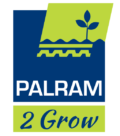Small System Hydroponic Growing Media
In hydroponic growing systems, the plants receive all their needed nutrients form the water and the air. NFT (Nutrient Transmission Technique) systems work on the principle of continuously circulating the nutrient rich water in the system, making all the nutrients available all the time to the roots that are immersed in the slow stream. The root picks up what they need when they need it directly from the water.
So, what is the function of the planting/seeding media?
Mainly, the media is used as a structural support for the root system, helping to stabilize the plant in its place. Also, the media should allow for easy passage of the water through it while letting some air reach the roots as well. There is no need for the media to supply any nutrients beyond what the water brings.
How do you choose the right media for you?
There are many considerations. Some considerations are practical, like cost, availability in your location, ease of use and durability or lifetime. Other considerations are functional, how they directly affect the growth of the plants, like stability, effect on the water and nutrients, aeration, and wicking effect. And there are health and environmental considerations like is the media biodegradable, does is pose a health risk when handling etc.
Sounds complicated? Don’t worry, it really isn’t that bad.
We have narrowed down the common types of growing media
and considered their advantages and disadvantages:
We have narrowed down the common types of growing media
and considered their advantages and disadvantages:
Coconut coir or Peat pellets
Also known as “Jiffy”, they are made from the ground outer husk of a coconutor a compressed peat moss.

Advantages
Disadvantages
Perlite
This is a puffed volcanic sand that can be purchased in bulk in various particle sizes.
Advantages
Disadvantages
Rockwool
Made from molten volcanic rock that is spun into thin fibers, that are woven into blocks.
Advantages
Disadvantages
No growing media
Made from nothing and comes for free.
Advantages
Disadvantages
Hard to choose? The good news is that you can use any of the above, mix and match or something completely different. While many other home systems come with pre-seeded expensive media, the Proleafy system is an open architecture. You can use the media that is available to you, and you are encouraged to experiment with other new and exciting solutions. Please share you experience our community!
